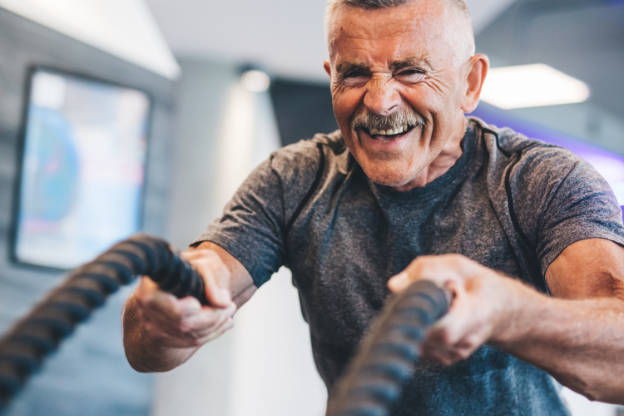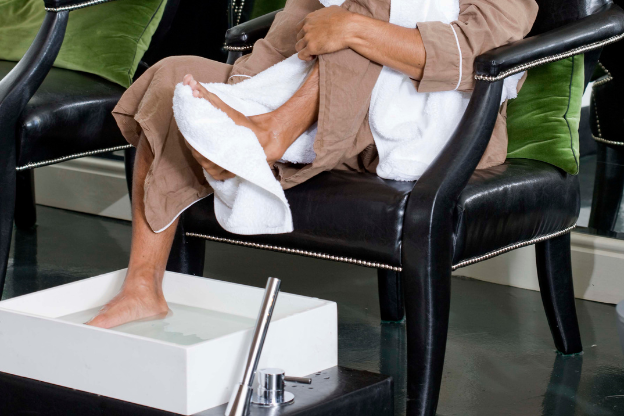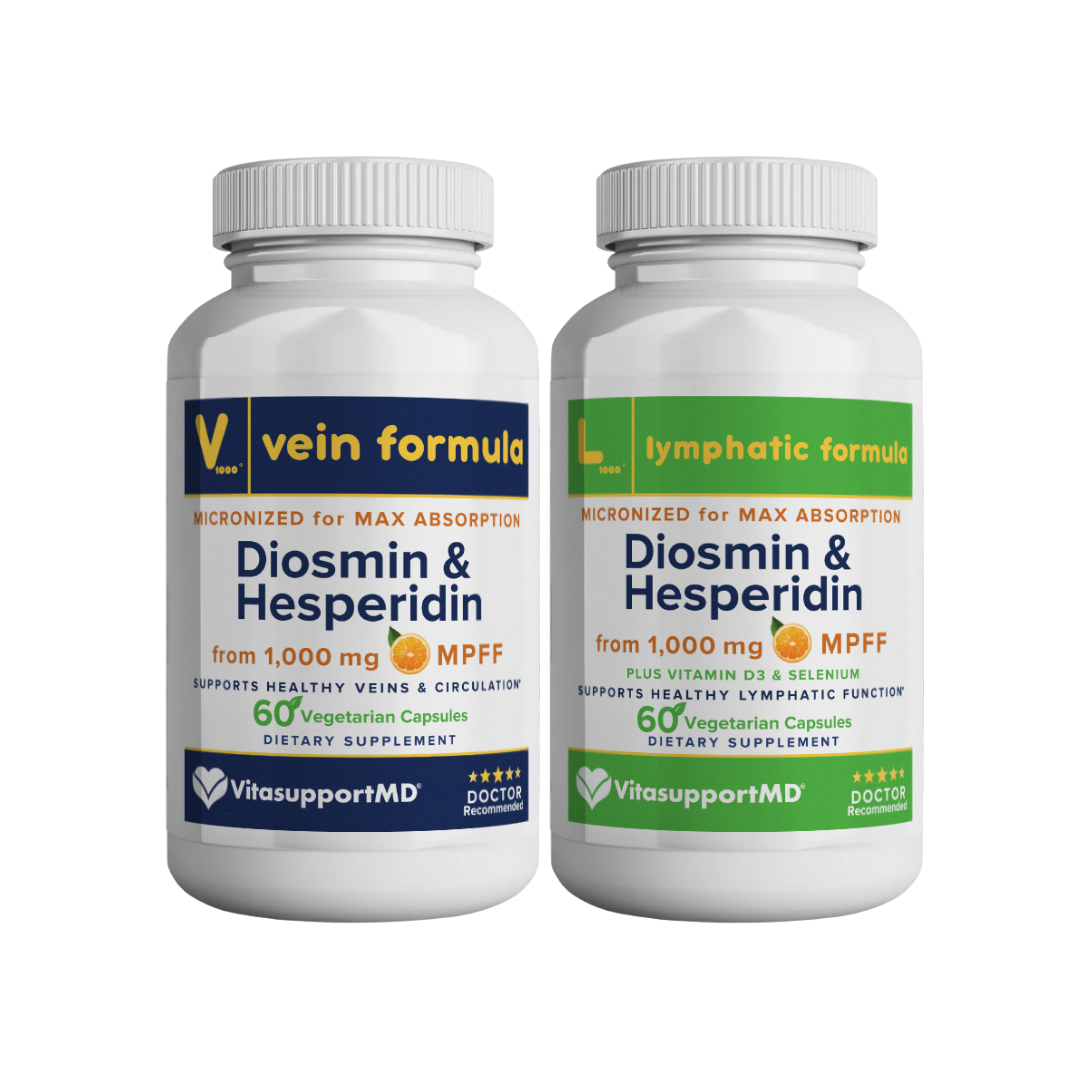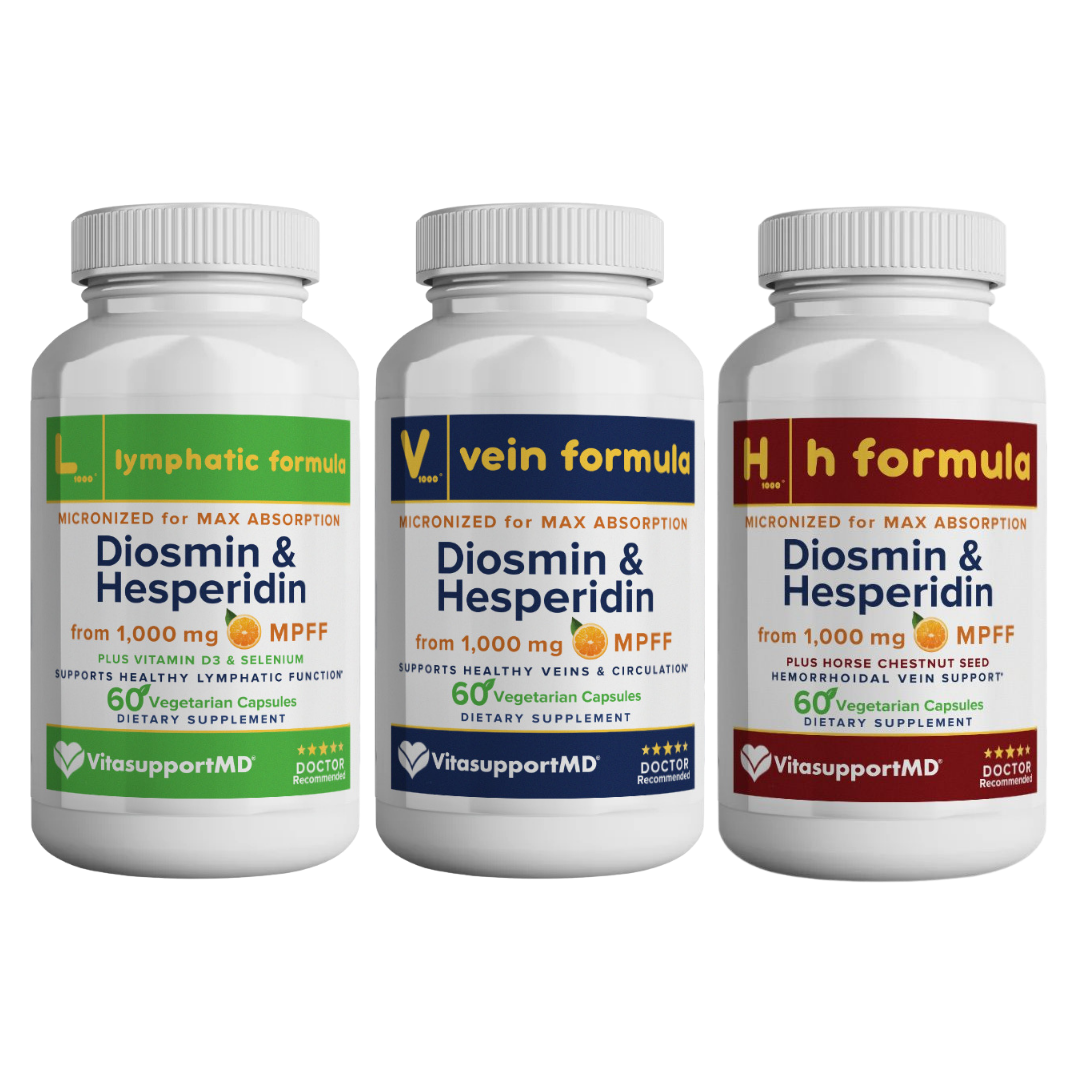
What Cold Feet Might Be Telling You (and What You Can Do About It)
Cold feet are a common experience that many people face, especially during colder months or after long periods of inactivity. While occasional coldness in the feet is usually harmless, persistent cold feet may sometimes point to underlying concerns related to circulation and overall leg health.
As June marks Men’s Health Month and Father’s Day approaches, it’s an excellent time to focus on habits that can help support healthy circulation and promote comfort for the men in your life. Understanding what cold feet might be telling you and exploring simple, safe steps to support circulation can contribute to overall vitality and well-being.
This article explores common causes of cold feet, with a focus on poor circulation in the feet, and offers practical tips to help support normal fluid balance in the legs and promote lasting leg comfort.
What Causes Cold Feet? An In-Depth Look
Cold feet occur when less warm blood reaches the feet, causing them to feel chilly. Blood flow to the feet is regulated by the body depending on internal temperature, activity levels, and various other factors. Let’s explore the causes of cold feet in more detail.
Environmental and Lifestyle Factors That Cause Cold Feet
Temperature and Weather Impact
Exposure to cold temperatures triggers the body’s natural response to conserve heat by reducing blood flow to the extremities, including fingers and toes. Blood vessels narrow (vasoconstriction), limiting heat loss but often resulting in colder feet. This mechanism acts as a safeguard to regulate core body temperature, which is essential for organ function.
This means that during colder weather, experiencing cold feet is a common and expected phenomenon. However, when cold feet happen frequently or in warmer conditions, it may be worth exploring other causes.
Prolonged Sitting or Standing
Staying in one position for extended periods, such as sitting at a desk or standing in place, can slow circulation to the feet and legs. Muscle contractions act as a natural pump to promote blood flow, and when these contractions are limited, blood circulation becomes sluggish. This reduction in blood flow can contribute to the sensation of cold feet.
Simple habits, such as moving or stretching regularly during sedentary work, can help keep blood flowing.
Footwear Choices
Wearing shoes that are too tight, poorly insulated, or that don’t allow feet to breathe can restrict blood flow and cause feet to feel cold. Tight footwear compresses blood vessels, limiting circulation. Similarly, footwear without proper warmth or moisture-wicking properties may expose feet to cold and dampness, exacerbating discomfort.
Choosing well-fitting shoes with proper insulation and moisture control can help maintain a comfortable foot temperature.
Understanding Poor Circulation in Feet
Poor circulation in the feet refers to a reduction in blood flow to the lower extremities. Since blood delivers warmth and nutrients, reduced flow often leads to cold sensations.
The Role of Blood Vessels
Arteries carry oxygen-rich blood from the heart to the feet, while veins return deoxygenated blood to the heart. Healthy blood vessels flex and contract to regulate flow efficiently. If blood vessels narrow or become less flexible, blood flow to the feet slows.
While aging naturally affects blood vessels, lifestyle factors such as inactivity or smoking can also impact circulation.
Symptoms Associated with Poor Circulation
In addition to cold feet, poor circulation may present as:
- Tingling or numbness in the feet and toes
- A heavy, tired, or achy sensation in the legs
- Pale, bluish, or dull skin tone
- Cramping or discomfort when walking or exercising
Persistent or worsening symptoms should prompt consultation with a healthcare professional.
Common Factors That May Contribute to Poor Circulation and Cold Feet
Several factors can contribute to poor circulation or cold feet, some lifestyle-related and others associated with broader health concerns.
Sedentary Lifestyle and Inactivity

Regular muscle contractions are crucial for pumping blood through the legs and feet. Sitting or standing still for long periods limits these contractions, slowing blood flow. Incorporating movement breaks into daily routines is an effective way to support circulation.
Smoking and Circulatory Health
Smoking negatively impacts blood vessel function by causing narrowing and reducing flexibility, which can contribute to decreased circulation. Avoiding smoking and minimizing exposure to secondhand smoke supports vascular health.
Poor Nutrition and Hydration
A diet lacking essential nutrients may impair vascular function. Nutrients such as vitamins C and E, omega-3 fatty acids, and magnesium support blood vessel health. Proper hydration maintains fluid balance, which is essential for optimal circulation and tissue health.
Chronic Health Conditions and Circulation
Although this article does not address medical diagnoses, certain chronic conditions may influence circulation. Regular health check-ups and discussions with healthcare providers can support circulatory wellbeing.
Age-Related Circulation Changes
Aging can lead to a decrease in the elasticity of blood vessels and reduced physical activity, both of which may contribute to slower circulation. Maintaining active lifestyle habits can help offset these effects.
The Science Behind Circulation and Normal Fluid Balance in Legs
Supporting healthy circulation and normal fluid balance in the legs is essential for comfort and overall well-being.
How Blood Flow Supports Leg Health
Effective blood flow delivers oxygen and nutrients necessary for tissue health while removing metabolic waste. Proper circulation also regulates temperature in the extremities, helping prevent cold sensations.
Normal Fluid Balance and Its Role
Fluid balance involves the regulation of fluids within blood vessels and tissues. When fluid is properly managed, swelling and discomfort are minimized. This balance is crucial to maintaining comfortable, healthy legs.
Clinical Insights on Supporting Circulation
Certain ingredients have been clinically studied for their potential to support normal fluid balance and promote venous health. While individual experiences vary, incorporating these ingredients through diet or supplements may help support leg comfort.
Practical and Safe Steps to Support Healthy Circulation and Warm Feet
Supporting healthy circulation in the feet and legs does not always require complex medical interventions. Many simple, practical habits can help improve blood flow, maintain normal fluid balance in the legs, and reduce the uncomfortable sensation of cold feet. These measures can be integrated easily into daily life and offer long-term support for leg comfort and overall well-being.
Move Regularly and Avoid Prolonged Inactivity
Movement is one of the most effective ways to support circulation. When muscles contract, they help pump blood back toward the heart, improving circulation, especially in the lower extremities. Prolonged sitting or standing without movement reduces this natural pumping action and can contribute to sluggish blood flow.
- Incorporate frequent breaks: If your job requires long hours at a desk, try to stand, stretch, or walk for at least 5 minutes every hour. Setting reminders on your phone or computer can help build this habit.
- Try simple foot exercises: Even when seated, flexing your ankles, rotating your feet in circles, or wiggling your toes can stimulate blood flow.
- Engage in regular aerobic activity: Walking, cycling, swimming, or light jogging are excellent ways to promote overall circulation and cardiovascular health. Aim for at least 150 minutes of moderate activity per week, if possible.
- Practice leg elevation: When resting, elevating your legs above heart level can help reduce fluid buildup and promote circulation.
Choose Proper Footwear and Clothing
What you wear on your feet and legs can significantly impact how warm and comfortable they feel. Footwear that fits poorly or restricts circulation can worsen cold feet.
- Wear shoes that fit well: Avoid shoes that are too tight or narrow, which can compress blood vessels and limit blood flow.
- Select insulated, breathable materials: Footwear with adequate insulation keeps feet warm without causing excessive sweating, which can lead to coldness once the feet cool.
- Use moisture-wicking socks: Materials such as wool blends or technical fibers help keep feet dry and warm by managing sweat and maintaining an even temperature.
- Layer appropriately: In colder months, wearing thermal socks or leg warmers can help maintain warmth without restricting circulation.
Practice Foot Care and Maintain Warmth

Taking care of your feet and keeping them warm can improve circulation and reduce discomfort.
- Warm foot baths: Soaking your feet in comfortably warm water (avoiding hot water, which can damage sensitive skin) can increase local blood flow and provide soothing relief.
- Foot massage: Regular gentle massage stimulates circulation by mechanically moving blood through the vessels. Massaging from the toes upward toward the calves encourages venous return.
- Avoid cold surfaces: Walking barefoot on cold floors can cause a rapid drop in foot temperature. Wearing slippers or socks indoors can help retain warmth.
- Keep feet dry: Moisture can exacerbate cold sensations and discomfort, so thoroughly drying your feet after bathing or exposure to moisture is essential.
Maintain a Balanced Diet and Stay Hydrated
Nutrition plays a key role in supporting blood vessel health and circulation.
- Eat a nutrient-rich diet: Include plenty of fruits, vegetables, nuts, whole grains, and lean proteins. These foods provide antioxidants and vitamins, such as C and E, which help maintain healthy blood vessels.
- Focus on circulation-supporting nutrients: Magnesium, found in leafy greens, nuts, and seeds, supports muscle and blood vessel function. Omega-3 fatty acids from fish or flaxseeds contribute to healthy circulation.
- Stay hydrated: Drinking enough water helps maintain normal fluid balance and blood volume, supporting healthy circulation. Aim for at least 8 glasses of water a day, more if you are active or live in a hot climate.
- Limit excessive caffeine and alcohol: Both can affect hydration and blood vessel function, so moderation is advised.
Manage Stress to Support Circulation
Stress can impact blood flow by causing blood vessels to constrict, which may contribute to cold feet.
- Practice relaxation techniques: Mindfulness meditation, deep breathing exercises, and progressive muscle relaxation can reduce stress and promote better circulation.
- Incorporate gentle movement: Activities such as yoga or tai chi combine physical movement with relaxation, supporting both circulation and stress management.
- Maintain healthy sleep habits: Poor sleep quality can affect overall cardiovascular health, so aim for 7-9 hours of restful sleep each night.
Consider Supportive Supplements Designed for Leg Health
In addition to lifestyle habits, some supplements may offer support for healthy circulation and normal fluid balance in the legs.
- Clinically studied ingredients: Certain compounds have been studied for their ability to support vein and lymphatic function, helping maintain normal fluid balance in the legs. These may include plant-based flavonoids, antioxidants, and other botanical extracts.
- Complement a healthy lifestyle: Supplements can be part of a broader approach to leg health, but should not replace a balanced diet and physical activity.
- Consult with a healthcare provider: Before starting any supplement, it’s important to discuss it with a healthcare professional to ensure it’s appropriate for your individual needs.
Special Focus: Men’s Health Month and Circulation Awareness

Men’s Health Month highlights the importance of paying attention to health topics that may sometimes be overlooked, such as circulation and leg health. Many men experience challenges related to circulation due to lifestyle factors like long hours of sitting or standing, smoking, and diet choices. Supporting healthy circulation and normal fluid balance in the legs can improve energy, comfort, and overall well-being.
With Father’s Day on June 15, this month also offers a meaningful opportunity to encourage the men in your life to prioritize their leg and circulatory health. Taking small, consistent steps, such as regular exercise, balanced nutrition, and selecting supportive supplements, can help maintain comfort and vitality.
Raising awareness during this time can empower men to recognize early signs, such as cold feet, and take proactive measures to support their leg health, ultimately contributing to better mobility and a higher quality of life over time.
Why Circulation in Feet and Legs Matters for Men
Leg and foot circulation plays a crucial role in overall health, especially as men age. Reduced circulation may contribute to discomfort and impact daily activities. Focusing on circulation during Men’s Health Month encourages men to adopt habits that promote leg comfort and overall vitality.
Encouraging Preventative Measures During Men’s Health Month
Small changes can have a positive impact, such as:
- Taking frequent breaks to walk or stretch
- Choosing balanced meals rich in circulation-supporting nutrients
- Wearing comfortable, supportive footwear
- Considering supplements that support normal fluid balance in the legs
Raising Awareness About Circulatory Health
Men’s Health Month promotes open discussion and increased awareness, which can encourage earlier attention to circulatory health and help men take proactive steps toward well-being.
When Should You Seek Professional Advice?
While cold feet often have benign causes, persistent or worsening symptoms such as pain, numbness, or color changes in the feet should prompt a healthcare consultation. Early evaluation can help identify issues and guide appropriate management.
Conclusion
Cold feet can be a common experience, but may also indicate changes in circulation or leg health. Understanding the causes and adopting practical steps, such as regular physical activity, appropriate footwear, balanced nutrition, hydration, stress management, and considering supportive supplements, can help support healthy circulation and maintain normal fluid balance in the legs.
Men’s Health Month is a perfect opportunity to focus on supporting circulation and maintaining leg comfort, particularly for men, to improve mobility and overall well-being.
Frequently Asked Questions (FAQ)
1. What are the common causes of poor circulation in the feet?
Poor circulation may be linked to lifestyle factors such as inactivity, smoking, and tight footwear, as well as natural aging and certain health conditions.
2. Can cold feet indicate a serious health problem?
Cold feet, while typically not a cause for concern on their own, can signal underlying issues if a person experiences pain, numbness, or any unusual sensations along with cold feet. A thorough medical evaluation is recommended.
3. What daily habits can help improve circulation?
Regular movement, appropriate footwear, a balanced diet, hydration, and stress management all support healthy circulation.
4. Are there supplements that support circulation and fluid balance in the legs?
Certain supplements with clinically studied ingredients may help support normal fluid balance and healthy circulation when combined with lifestyle habits.
5. How can maintaining fluid balance affect leg comfort?
Proper fluid balance helps ensure optimal blood flow and reduces sensations like heaviness or coldness in the feet and legs.
Share











